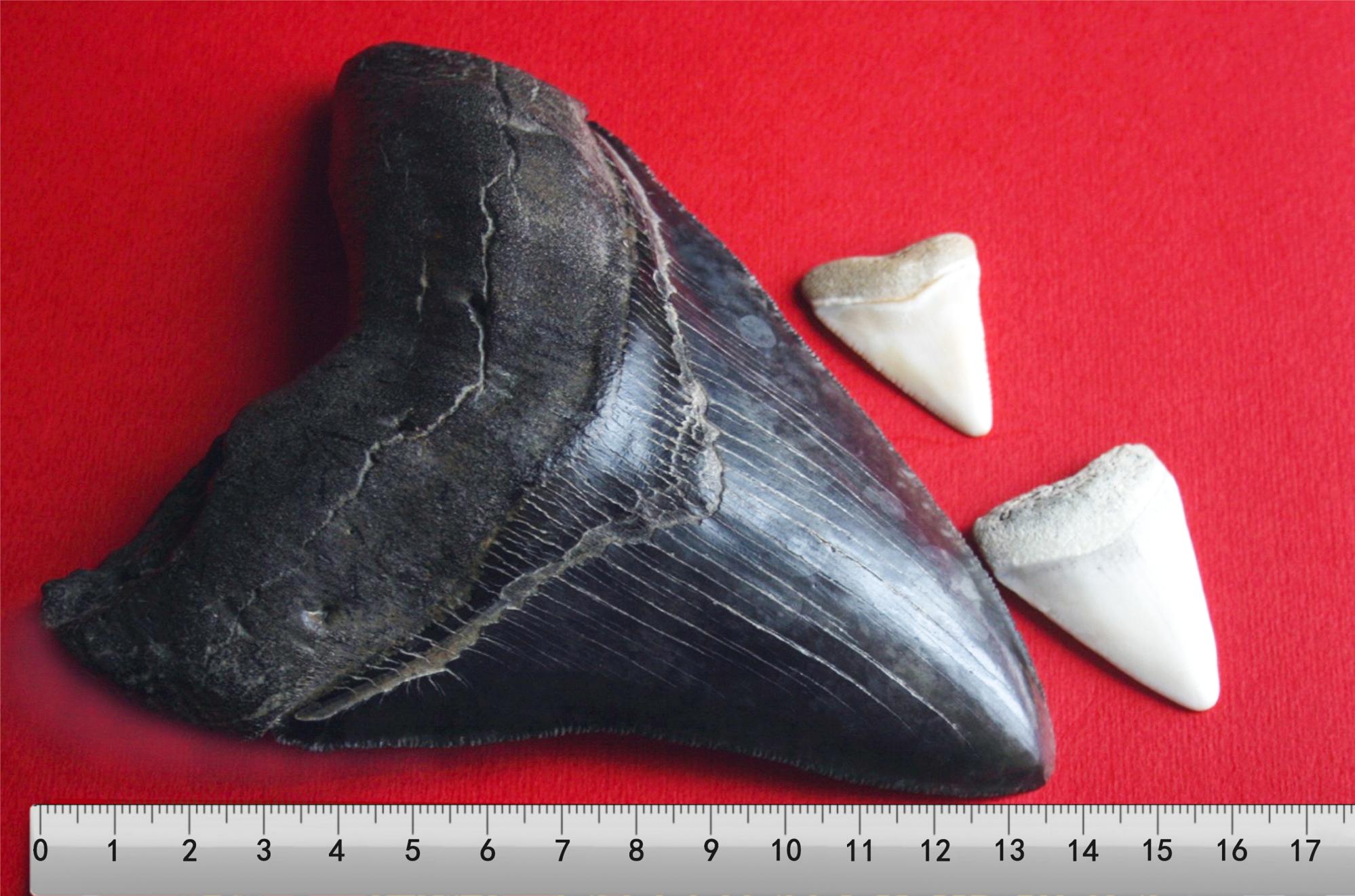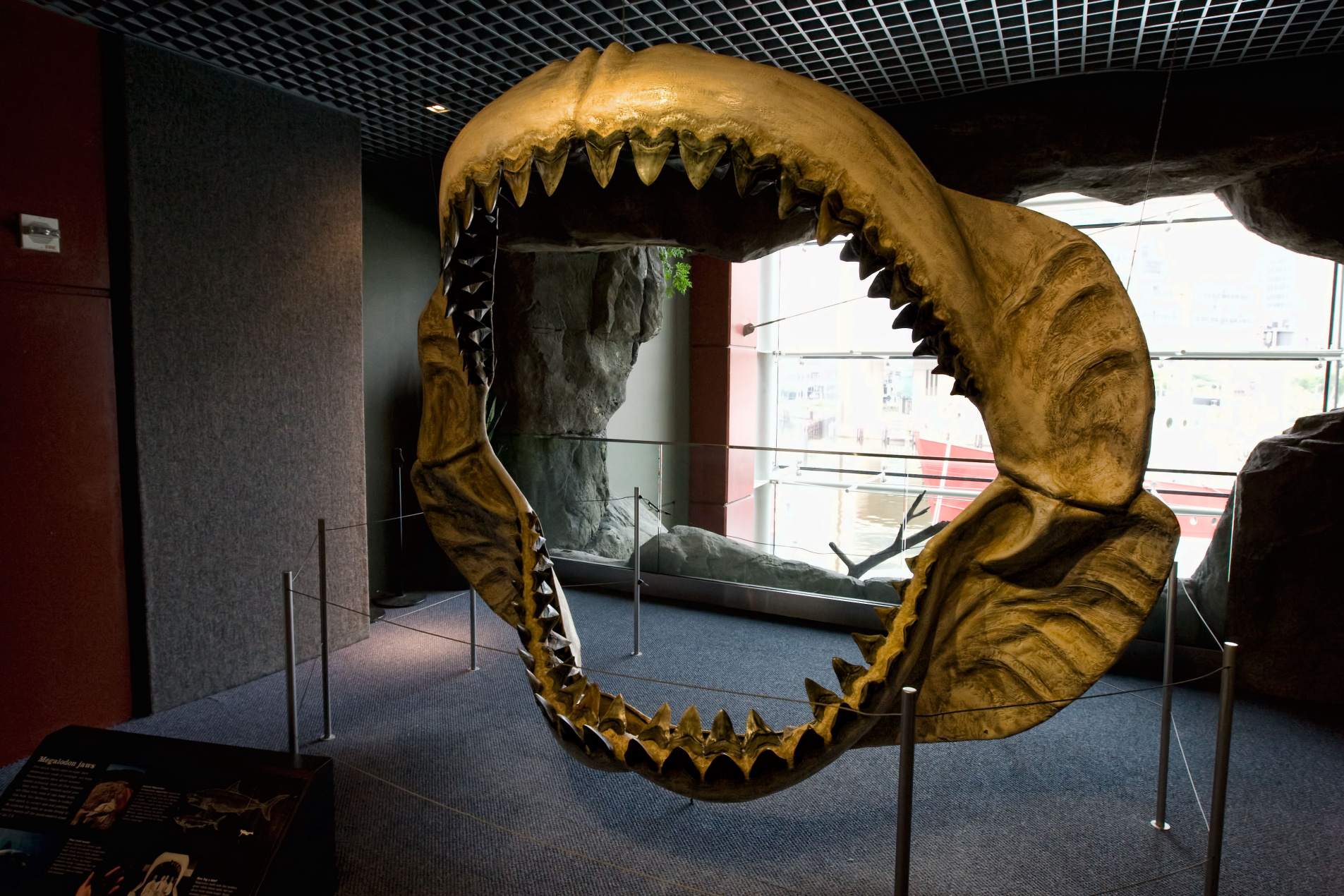The prehistoric Megalodon (Otodus megalodon) was a shark thought to have gone extinct 3.6 million years ago. This creature was immense, making it the biggest shark to have ever been in the oceans and the largest predator the planet has ever seen. It was widespread, found in all tropical and temperate oceans.

Megalodon – the prehistoric giant
Megalodon translates as ‘big tooth’, which is an apt name: just one of its gnashers can more than fill the palm of your hand. In contrast, a tooth of a great white shark is more or less the size of your little finger.

Scientists estimate that megalodon could grow up to 18 meters in length. For context, that’s the length of approximately three great white sharks.
What did megalodon eat?
Living it quite so large requires vast amounts of food. Megalodon was by all accounts a ferocious predator – a ferocious super-predator in fact – able to take substantial prey such as whales, seals, turtles and other sharks. It probably approached its quarry from behind, seizing it with those powerful jaws with more than 270 teeth, arranged in rows, and chomping it down in a few mouthfuls.

As with all sharks, megalodon’s teeth were regularly shed and re-grown. Its bite-force was phenomenal, ranging from 100,000 – 180,000 Newtons. T-Rex could bite with a force of 64,000 Newtons. Megalodon also had a vast gape spanning two metres, which enabled it to swallow killer whales whole.
When and why did megalodon go extinct?
Scientists don’t know exactly when megalodon died out, but they do know from fossil evidence that it was some time in the Pliocene (5.3-2.6 million years ago), when temperatures began to drop and the planet cooled.
The significant cooling event and associated drop in sea levels that the planet experienced during the Pliocene had drastic and far-reaching consequences for all marine life – the planet’s biodiversity was lost during this period.
Ocean productivity diminished and many marine species died out, including a substantial number of large marine mammals that would have formed part of megalodon’s diet. Due to the lack of prey, this giant hunter, sitting at the top of the food-chain, would have started to go hungry to its extinction. The closest estimated date for megalodon’s final swim is 3.6 million years ago.
Did megalodon evolve into today’s great white sharks?
Scientists have long believed that the prehistoric megalodon shark evolved into today’s scariest sea predator, the great white. However, a new study comparing teeth suggests that the great white is more closely related to the smaller, but equally vicious mako shark.




